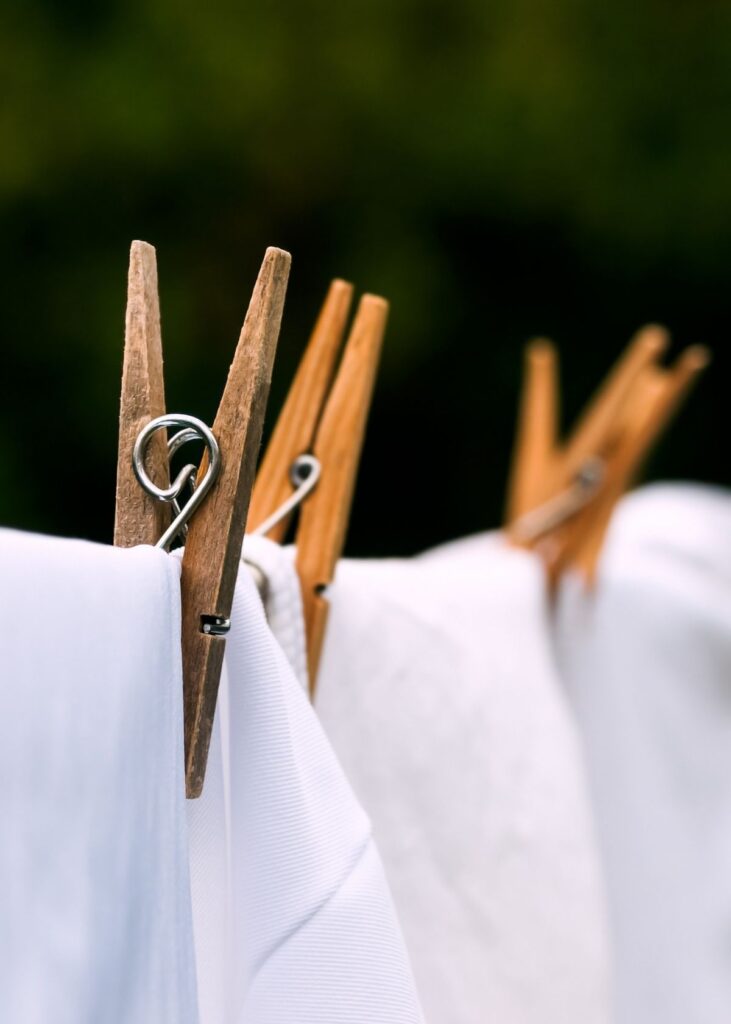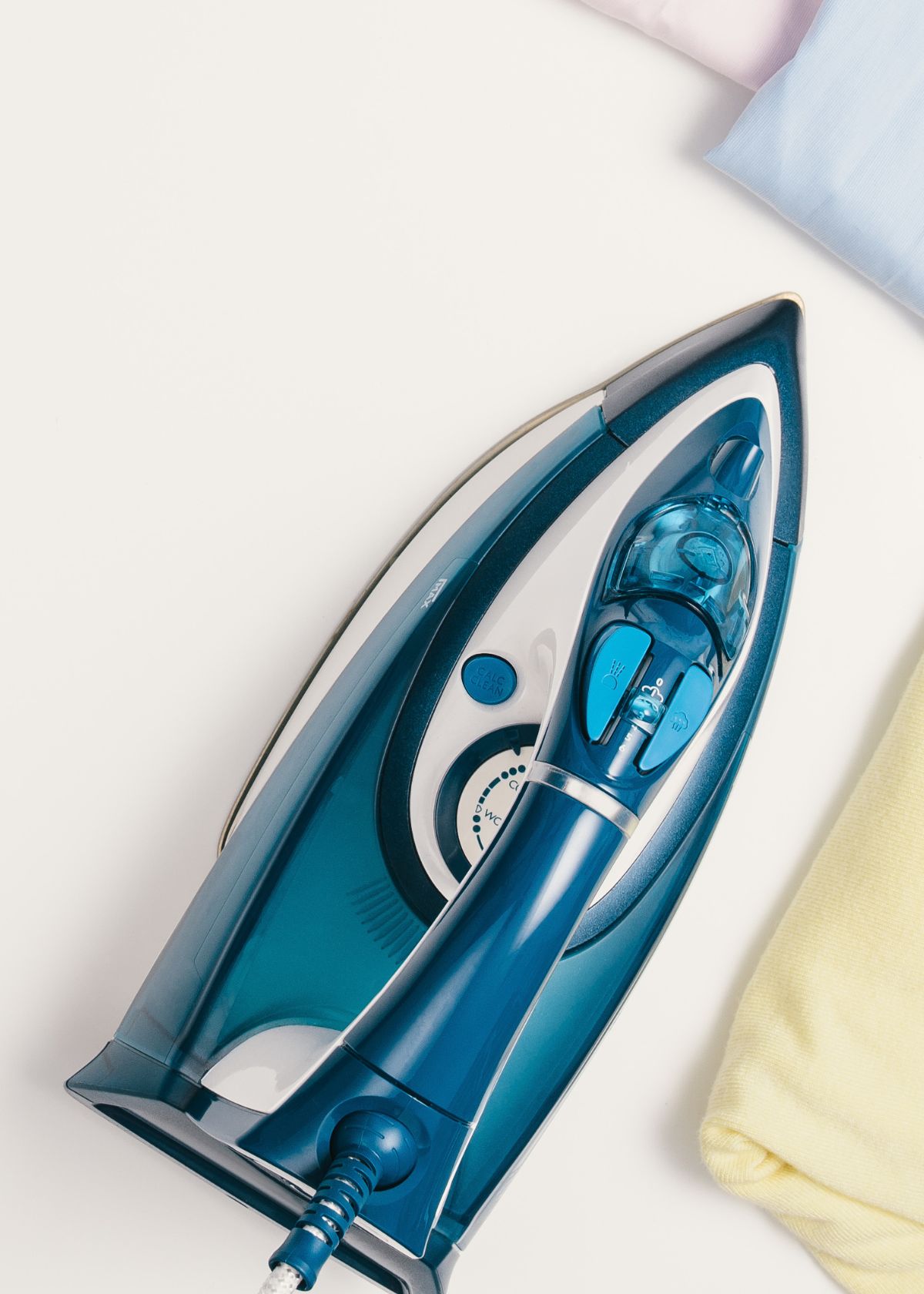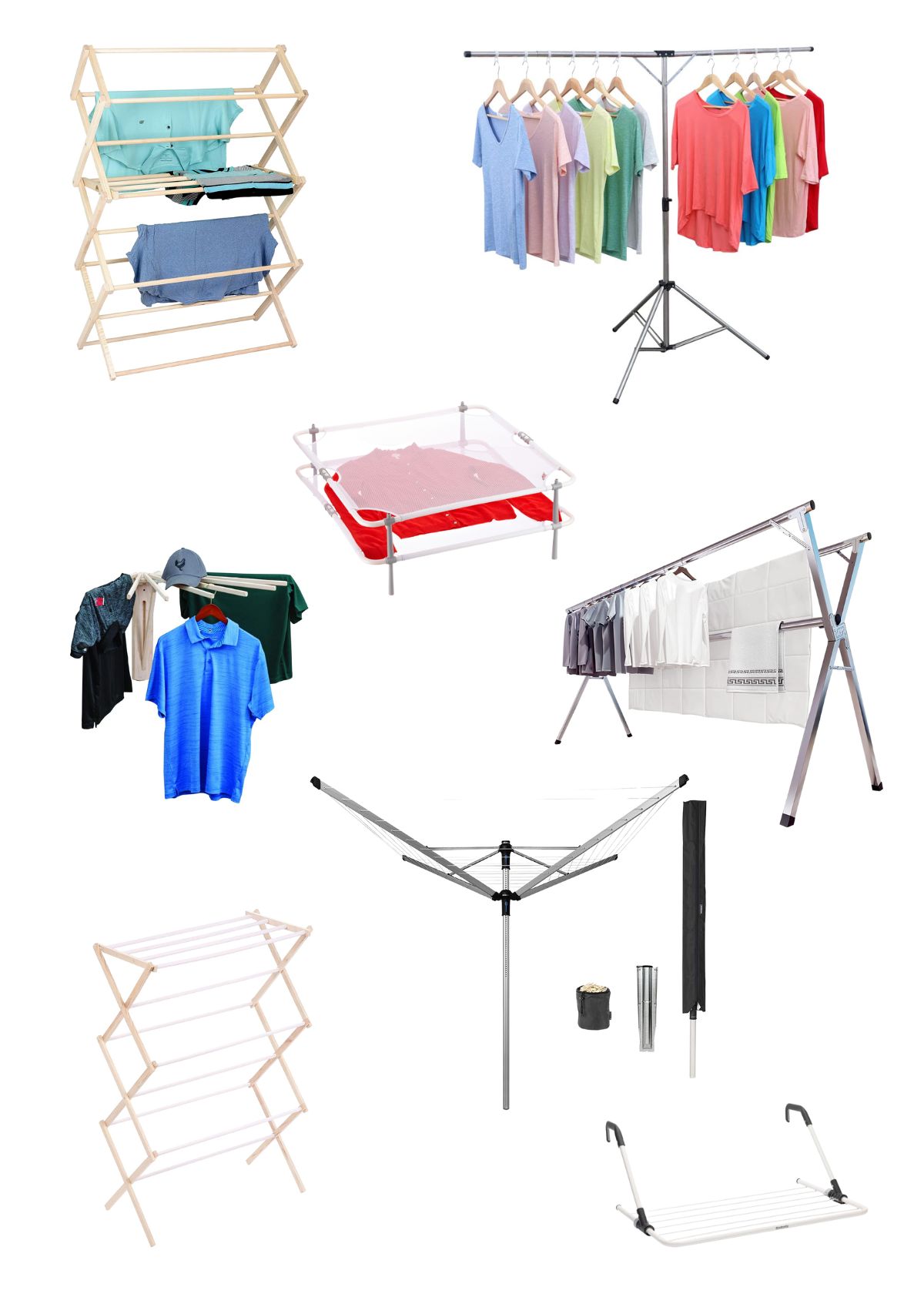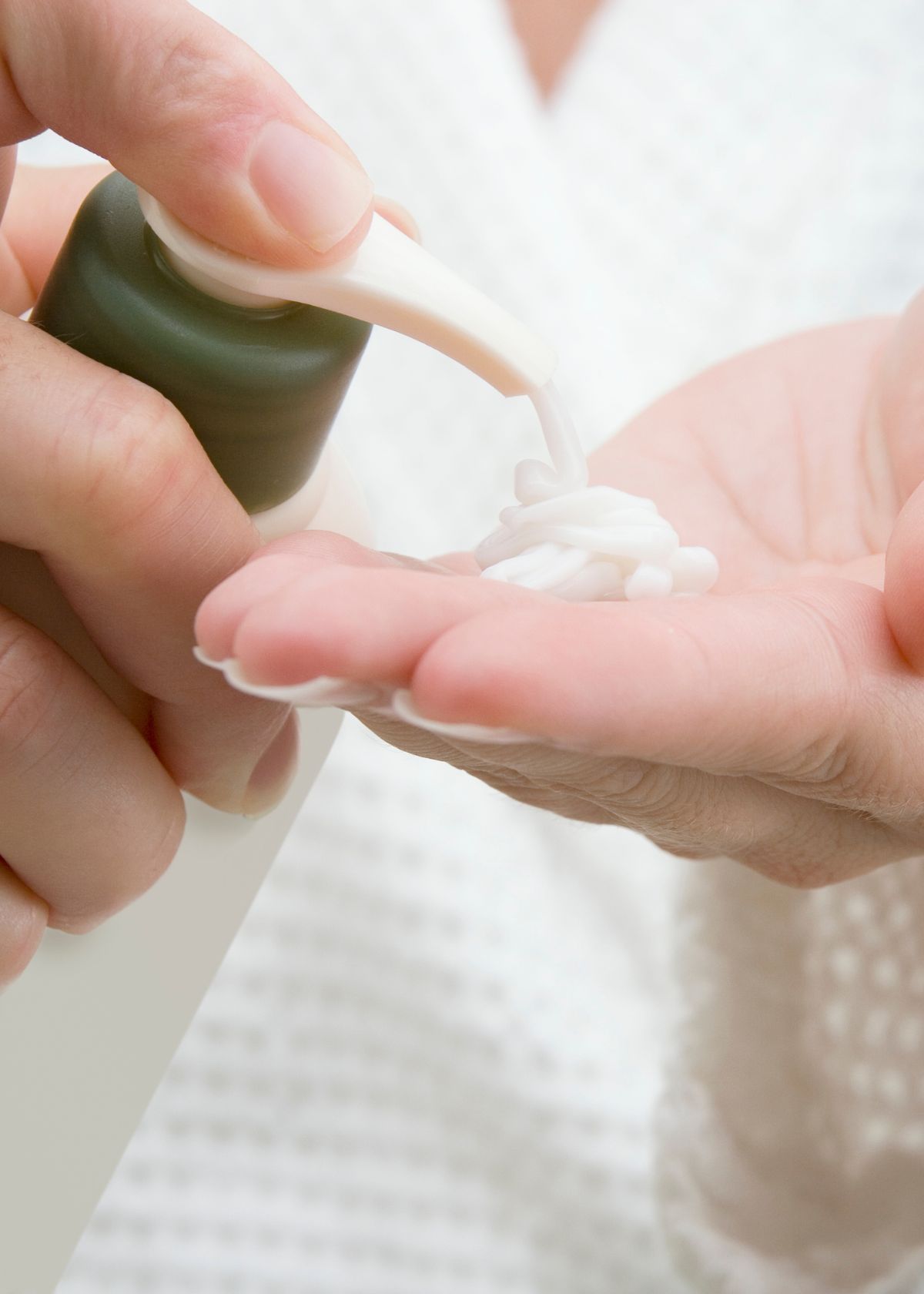What Does Line Dry Mean for Laundry?
If you’re in the habit of checking garment care labels before washing your clothes, then you may have noticed one symbol that means “Line Dry.” But what exactly does line dry mean for laundry?
Line drying clothing is the oldest, most basic method for drying fabrics. It also just so happens to be one of the gentlest, most eco-friendly methods for drying laundry as well! If you’re used to machine drying your clothes but you’re curious about the benefits of line drying, keep reading for all of my best line drying tips.
Quick Navigation
What is Line Drying
Line drying your clothes means hanging them to dry from a clothesline. This can be done either outdoors or indoors.
When it comes to clotheslines, there are a wide variety of designs that get the job done. There are free-standing drying racks, wall-mounted versions, pulley clotheslines or space-saving retractable clotheslines to name a few.
No matter what style of clothesline or drying rack you choose, make sure there is room for air flow and ventilation. When drying on a line, utilize clothespins to keep garments in place.
Why Line Drying is a Good Idea
Eco-Friendly
Line drying clothes is an eco-friendly alternative to machine drying. By skipping the dryer, you’re saving gas and electricity (depending on your dryer model).
Plus, line drying clothes is gentler on fabrics than machine drying with heat. That means line drying will extend the lifespan of most fabrics so you’ll have to replace them less often. The less often we replace our garments and linens, the less waste we send to landfills. All good things for our environment!
Economical
Using less energy and gas is not only eco-friendly, it’s also budget-friendly. Sunshine and fresh air is free!
Plus, going back to the fact that line drying laundry can extend the lifespan of fabrics… The less often you have to replace clothes and linens means less money you have to spend on those replacements.
Natural Bleach
Sun is a natural whitener and brightener for light colored fabrics. Line drying light colored, stained fabrics in the sun is a great way to remove stains.
I saved countless stained baby outfits and onesies from the trash by soaking them in oxygen bleach, washing with detergent, then line drying them in the sun. Moms who cloth diaper their babies also recommend line drying in the sun to remove stains.
The sun is far gentler than chlorine bleach but still extremely effective.
Fewer Wrinkles / Crisp Finish
If you take a few seconds to shape your damp clothes as you hang them, you’ll end up with a crisp and mostly wrinkle-free finish.
And if you’re someone who loves to iron your clothes, line drying them first will minimize your need (or desire) to use spray starch. Line drying clothes gives them a crisp finish that pairs extremely well with a hot iron.
I also like using my clothesline when I fold large sheets or linens. Folding them on the line means I get crisp, perfectly folded sheets without letting them ever graze a dirty floor.
Fresh Scent
Nothing beats the fresh, clean scent of line dried linens and clothing!
Dryer sheets and many laundry detergents are made with artificial fragrance. This is unfortunate because most artificial fragrances are created using toxic chemicals that can be damaging to our health (or at the very least can cause headaches!). Avoid artificial fragrance altogether by line drying laundry.
Line Drying Frustrations (and How to Avoid Them!)
Time
Line drying takes more time than machine drying. With that said, the time it takes to line dry depends heavily on multiple factors. It depends on the fabric you’re trying to dry, the weather, how wet your garment is prior to line drying, what time of day you choose to line dry, etc.
If you’re concerned about the amount of time it might take to line dry your laundry, try a hybrid approach. Tumble dry your washed clothes for 10-15 minutes before setting them on the line to finish. You can also reverse the order and start by line drying for 30-60 minutes then finish off your laundry in the dryer.
Unpredictable Weather
If you live in a climate where you have summer storms or rainy/snowy winters, then line drying your clothes outdoors can feel like a risky chore. If you want the benefits of line drying without the risk of a rainstorm ruining your hard work then consider line drying indoors.
Line drying indoors means you’re less likely to forget about your laundry on the line. Even if you somehow forget about laundry hang drying in your home (maybe you have a really big house?), there is no risk of excessive sun exposure, evening dew, or an unexpected rainstorm getting in the way of a job well done.
Color Fading
Line drying in the sun does increase the risk of fading in colorful fabrics. With that said, there are a few ways to mitigate this possibility.
First, line dry colorful or patterned clothing inside out. If possible, line dry your colors on a shadier section of your line. And if you’re still worried about this then line dry your colors indoors to eliminate sun exposure altogether.
Stiff Fabrics
Perhaps the biggest complaint I hear from people about line drying is how fabrics end up feeling very stiff. This is especially noticeable in heavier fabrics like towels or sweatshirts.
If you can’t stand that “stiff” feeling in your fabrics, finish them off in the dryer. After line drying towels and sweatshirts, toss them in the dryer with a few wool dryer balls. You can even add one wet (but not dripping) washcloth to create a little steam in the dryer as well. Run the dryer for 5-10 minutes. Doing so will soften heavy fabrics so you can enjoy fluffy towels with minimal dryer use.
NOTE: this technique is appropriate for dryer-safe garments – always check garment care labels before machine drying and avoid machine drying fabrics like wool that are known to shrink in the dryer.
Aesthetics
Some people simply hate the look of laundry lines or laundry umbrellas installed in the yard. In fact, many HOAs restrict homeowners from installing laundry lines that are visible above a fenceline for this very reason.
If you can relate, but you’re still interested in line drying clothes outdoors, a retractable clothesline is a great option for you. You can extend these types of clotheslines for your linens on laundry days then retract them when not in use.
FAQs
What are the best clotheslines?
The best clothesline for you will depend on your volume of laundry, space limitations, HOA restrictions, and more.
Here are a few popular options for outdoor clotheslines:
- Retractable clotheslines
- Pulley clotheslines
- Umbrella clotheslines
Great options for indoor clotheslines:
- Free-standing clothes drying rack
- Wall-mounted drying rack
- Retractable clotheslines
Is it better to line dry laundry indoors or outdoors?
If it’s winter and you have rain and snow outside then indoors is going to be your best bet. If the weather is warm, sunny, and dry then outdoors is a fantastic option. I personally love drying my laundry outdoors in fresh air!
How do I prevent line dried laundry from feeling stiff?
Towels and other heavy items can feel stiff and uncomfortable after line drying. Toss them into the dryer for 5 minutes after pulling off the line. Don’t forget to add a few wool dryer balls. This will loosen up fibers and soften your towels.
How do I prevent my clothes from sun bleaching on the line?
Dry colorful clothing inside out. You could also choose a shadier section of your line or a shadier time of day to line dry colorful fabrics. Alternatively, you can always choose to line dry colored fabrics indoors and lighter fabrics outdoors.
How do I minimize wrinkles in line dried clothing?
Shake them out first and shape them once they’re on the line. I always take the time to straighten out the hems and edges of my garments so they aren’t curling up as they dry. Don’t forget to also shake out and shape long sleeves so they aren’t twisted or folded awkwardly as they dry.







